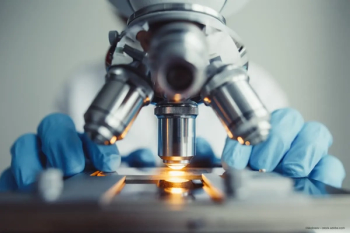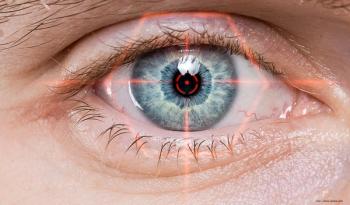
Q&A: The story of accommodation and the rise of presbyopia research
AnnMarie Hipsley, DPT, PhD, explores innovative approaches in ocular biomechanics, shifting focus from lenses to holistic treatments for presbyopia, enhancing vision care.
AnnMarie Hipsley, DPT, PhD, of ACE Vision Group, discussed research in ocular biomechanics. The team explored the shifting from traditional lens-focused approaches to holistic systems-level treatments for presbyopia. The discussion highlights innovative applications of AI, advanced imaging, and virtual reality, aiming to revolutionize vision care, restore youthful eye function, and improve quality of life.
Note: The following conversation has been lightly edited for clarity.
Ophthalmology Times Europe: What have been the most significant milestones in our understanding of ocular accommodation, and how have they shaped current approaches to presbyopia research?
AnnMarie Hipsley, DPT, PHD: As a doctor of physical therapy, my research for the past 2 decades has been ocular biomechanics, and today, our group thanks our co-authors. Dr Dan Goldberg, Dr George Waring IV, Dr Cathleen McCabe, and Dr Cristos Ifantides, are culminating the last few decades of research to bring about what's emerging and why we need to change from a lens-centric view to a systems-level view of how these interrelated components work for our eyes, most important function: dynamic range of focus.
Most importantly, we focused on this one aspect of accommodation of anterior-posterior movement through the pupil of the lens. Dynamic range of focus has 4 elements. It has not only that, but also we have to think about the pseudo-accommodation arising from higher order aberrations, sphericity, and also we have to pay attention to pupil dynamics, very powerful. We know that with the drops coming out, that that works also. Another aspect of this is what's happening with the lenticular higher order aborigations as well. We need to consider all these elements, and fortunately, what's emerging now is these wonderful new combo devices with biometrics at the same time with imaging. We looked into OCT that's dynamic, UVM, that's dynamic. These are all evolving in addition dynamic way front aberrometry, where you can see in real-time all of these functions and imaging at the same time, this is a new opportunity to measure these things and also to see how the Bruchs choroid membrane, the elastic components, and the dynamic muscle components. We can't just focus on the lens. We need to know what moves it. That's where our team has been really spending a lot of our effort, and what this poster is about.
OTE: How have recent advances in presbyopia treatments—pharmacologic, optical, or surgical—been influenced by our evolving understanding of accommodation mechanisms?
Hipsley: We've been focused in this myopic world of the lens, the lens, but you're seeing now, "let's go out to the pupil." Of course, our efforts have been in the sclera, and we've been able to show that not touching optics, we're able to get these components moving and get great results with dynamic range of focus, which doesn't seem intuitive. It seems counter-intuitive, but this is why these imaging and all of these data are helping inform. One of the things that we have in our our sort of portfolio, is an AI-driven virtual reality eye. We can recreate these things, and people can visualize them. When Dan Goldberg came out with his 2D animated computer animation of accommodation. Everyone was like, "wow, this is way more complex. "You could see 6 zonular pathways, not 1. The Bruchs membrane elastic slingshot was super important. It's not just the muscles. We need to visualize. We're visualizers. When we can see that, now we can take that visualization, put it into virtual eye simulation analyzer or VESA, and put physics behind it and custom make virtual reality eyes. This is a huge opportunity, especially with the new AI-enabled devices and diagnostics, and now we have AI virtual clinical trials.
OTE: Looking forward, which emerging areas of presbyopia research hold the most promise for improving visual function and patient quality of life?
Hipsley: Dynamic range of focus is the heartbeat of youthful vision. Just like any other youthful system, you need balance and elasticity. This is illuminating a new way to restoring function to the eye. That's really the Holy Grail. I think this will open a whole Pandora's box of whole eye, and system-level viewpoints will open up a whole new generation of presbyopia treatments that not only give us back vision, but restore physiology, quality of life, and potentially reduce the global burden of disease, being that it's the number one unmet opportunity in ophthalmology.
Newsletter
Get the essential updates shaping the future of pharma manufacturing and compliance—subscribe today to Pharmaceutical Technology and never miss a breakthrough.












































